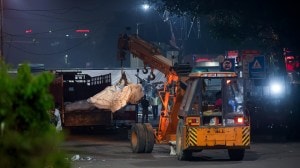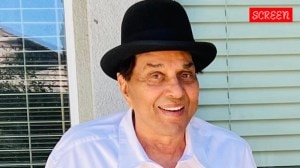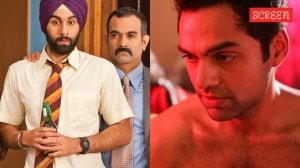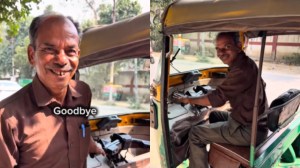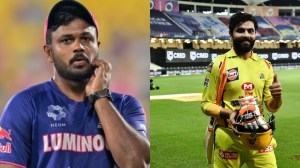Riots accused fly the coop
May 7: Five years after widespread riots ravaged Mumbai, the chickens are not coming home to roost. Instead, they are flying away even furth...

May 7: Five years after widespread riots ravaged Mumbai, the chickens are not coming home to roost. Instead, they are flying away even further, slipping through the criminal justice system with relative ease.
The last fortnight witnessed three acquittals in the most sensational cases of the December 1992-January 1993 riots.
First, the 11 Muslims accused in the Radhabai Chawl case were acquitted by the Supreme Court; next, 39 Muslims accused of killing two constables on December 7 in Deonar were acquitted by the Sessions Court, while five were convicted for three years; finally, Sena MP Madhukar Sarpotdar was acquitted by a magistrate’s court of the charge of being in possession of unauthorised firearms during curfew. These cases illustrate the failure of the legal justice system.
They also expose the manner in which the Mumbai police investigated the riots cases, almost 60 per cent of which were closed by them.
Consider this: Till now, only four of the riots cases involving murder have resulted inconviction in the lower courts. All those convicted were Muslims.
Apart from the Radhabai Chawl case and the Deonar killing of two constables, a 65-year-old was convicted of killing Bhau Bhosale, a mathadi worker in December 1992; and two Muslim youth were sentenced to life imprisonment for killing head constable Chandrakant Khopkar on December 7, 1992.
The rest of the acquittals have gone unnoticed except for one which made front-page news in the Shiv Sena mouthpiece Saamna – the acquittal of eight youth described by the police as Shiv Sainiks, of the charge of burning alive 11 persons in Worli in January 1993.
Saamna did try hard to provoke the Bane children, whose parents had died in the incident, into reacting against the Radhabai Chawl judgment (this correspondent was witness to such an attempt). But with the only Bane survivor not in Mumbai, the effort came to nought. And the Supreme Court acquittal could not be exploited the way the Radhabai Chawl incident had, thanks to the judges’emphatic conclusion that all six eye-witnesses were unreliable, and their strong criticism of the way the police handled the case – those following the case know that some of those named by the survivors and their families, were never arrested.
But as much as the Radhabai Chawl acquittal, most of the other acquittals deserved front page status. The most shocking was the case of Khurshidbano and her daughter Shakila. Khurshidbano identified, both at the police station and in court, eight of Shakila’s neighbours who had stripped and assaulted them in January 1993 in Borivli. (Shakila was later burnt to death.)
But they were acquitted because the TADA judge accepted the defence’s citing of a high court judgment which says identification parades held in police stations are invalid. The TADA judge also did not feel the testimony of a sole eye-witness was trustworthy enough in a case involving mob violence. The government is yet to approve of the public prosecutor’s recommendation that it go in appeal againstthe judgement.
Most of the acquittals have been for similar crimes; acts which attracted TADA, lynchings in broad daylight in residential areas, not far from police chowkies.
In every instance, police failed to show up at the scene of crime. Nor did they arrest anyone till several weeks later.
The acquittals have all been due to one factor alone: eye-witnesses turning hostile. The same persons who gave the police detailed descriptions of the crimes, later told the court they had seen nothing, or that the accused had not been present on the day of the incident. These TADA accused remained in custody till the trial began, ie, 18 to 36 months after the incident. But their associates were out, staying in the same area as the eye-witnesses. One can imagine the fate of other non-TADA cases, where the accused have themselves been out on bail within months of the incident, and the cases have not even come up for trial.
It was to remedy this that the Madon Commission and study groups set up by previousMaharashtra governments had recommended the following measures; a) Special courts to try riot cases;b) speedy investigation and trials, which would have a deterrent effect on anti-socials. c) A prosecutor to be appointed from outside the area. d) As a matter of policy, prosecution against communal offenders should not be withdrawn.
In Mumbai, not only have none of these measures been implemented, but the last was flouted with regard to the state’s remote control’.
(Jyoti Punwani is a freelance journalist)


- 01
- 02
- 03
- 04
- 05








